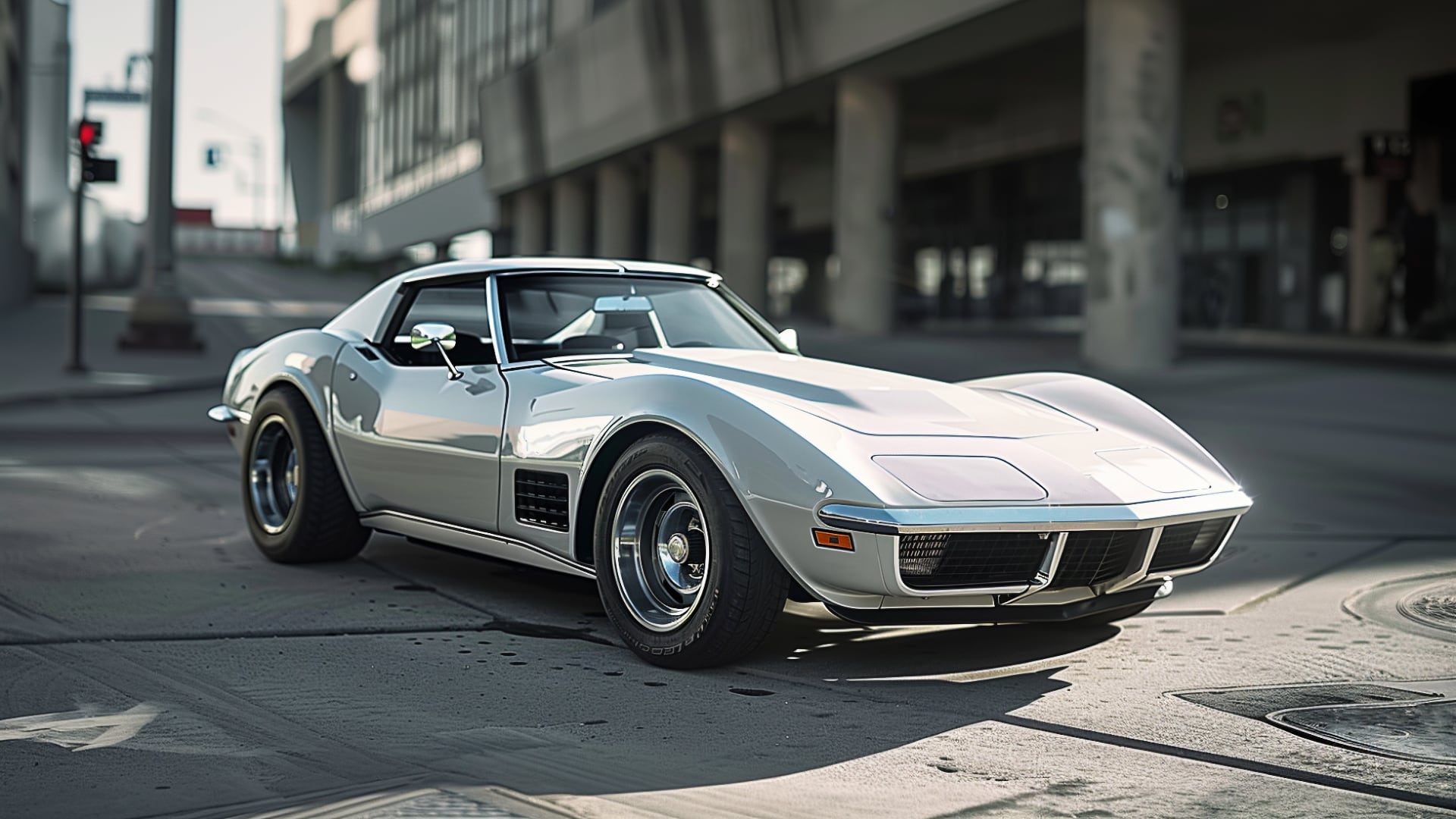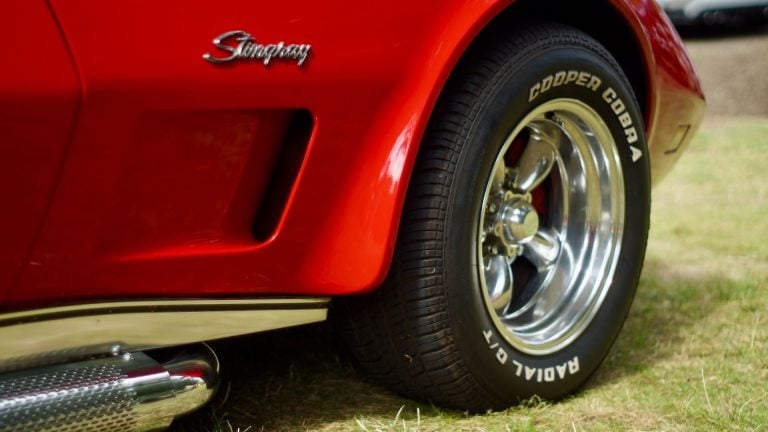Best and worst Corvette C3 years — which to avoid
This guide outlines the best and worst Corvette C3 years based on real driving experiences of the owners and official records on reliability ratings and complaints by model year.

Classic Vettes like the C3 generation are tough to come by in decent shape nowadays, but even if you manage to do so, there are still some Corvette C3 years to avoid. These are mostly affected by prevalent issues that are shown on several model years of the C3, so we’ll help you navigate your way through the worst model years in this guide.
Our experts have examined Chevrolet Corvette C3 complaints, official recalls, and reliability records to show you which years to steer away from. We’ll also show you which years are the ones to prioritize, and further explain the issues that affected some otherwise decent model years.
Why you can trust REREV’s advice on which car model years to avoid: Our car experts look at official data, ask real drivers what they think, and talk to experienced mechanics to make sure our list is useful. This reliable info can make buying a car easier for you. Want to know how we do it? Find out more about our research methodology.
How we rated the best and worst Corvette C3 years
To identify the worst options out there and rank the C3 years by best and worst, we had to dig into the reliability records and complaints. We visited trustworthy sites like IIHS for details on Corvette C3 safety ratings and details on driver satisfaction scores throughout the years.
We also wanted to hear directly from drivers and former Corvette C3 so we could use their experiences for the benefit of this guide. So, their C3 reviews helped us form a list based on those ratings and official records on the model’s reliability:
| Corvette Generation | Best Corvette C3 Years | Worst Corvette C3 Years |
|---|---|---|
| 3rd generation (C3) | 1972, 1975, 1980 | 1969, 1971, 1977, 1982 |
Most common Corvette C3 problems
The Corvette C3 is a pretty old car. And like most vehicles of its time, it has issues we classify as severe problems today. If you want to preserve your C3, these are the common problems you should watch out for.
1. Electrical faults
The primary electrical faults C3 suffered from are rooted in taillight and turn signal failure. Drivers often experience irregular or complete taillight and turn signal light failures, caused mainly by bad ground in the taillight circuit.
During repairs, check for wiring grounds or break-in wiring. You should also check for faulty light bulbs, brake light switches, and turn signal switches, as there are other reasons why the tail light and turn signal lights are not working right.
2. Engine problems
Most C3 models had overheating problems. The overheating has been commonly tied to replacing the stock radiator fan and fan shroud with an electric fan.
As such, it is unsurprising that the engine on most C3s was replaced. The machines themselves must have had a manufacturing defect as most drivers opted to change it quite early into its usage. If you check most surviving C3s today, finding one with the original engine would be nearly impossible.
3. Crankcase ventilation/PCV valve faults
The positive crankcase ventilation (PCV) valves are essential for the C3’s engine to perform as it helps the engine piston rings seal against the cylinder wall, causing a pressure drop in the crankcase. Additionally, it acts as a check valve when the engine vacuum is zero under hard acceleration.
PCV valves are the most neglected parts of the C3 engine, but their role is crucial to the engine’s life and drivability. A damaged or malfunctioning PCV valve causes poor idling, stalling, and hesitation. If the crankcase or valve covers are closed completely, the vehicle will suffer from leaks and extreme oil usage.
While battling this issue, ensure you do not buy aftermarket brands where baffles for the PCV valve or crankcase tubes are absent. Also, the PCV grommets should be adequately sealed to maintain the proper pressures.
4. Transmission problems
Like the engine, many drivers had to replace the transmissions on their C3. If you check Corvette C3s today, almost all of them would have a different transmission from the one they came with.
Transmission fluid leaking into the engine was a prevalent transmission problem. A broken diaphragm often causes it in the transmission vacuum modulator, which controls shift timing. A minor leak was enough to cause a loss of transmission fluid.
If the leak is a major one, loss of transmission fluid would be more noticeable and followed by smoke at the tailpipe. Also, rough idling is common for Corvettes with this problem. Getting your mechanic to deal with it sooner than letting it fester for weeks is essential.
5. Power window failure
The power window motor on the Corvette C3 frequently failed, causing the power windows on both the driver and passenger doors to fail. Sometimes, the issue is caused by a blown fuse or defective relay.
Replacing the power window motor is tedious and consumes a lot of time because the inner door panel would need to be removed for the technician to access the inner workings of the door. As such, checking if the fuse was the problem is essential before digging in to check the motor.
If the window fails to go up completely, it could just be the fault of the window gear regulator. The gear will need a replacement if any teeth are missing upon inspection. If the gear teeth are intact, your problem would be with the window motor.
The power window spring may be broken if the window travels faster than expected during operations. If you experience such a problem, you’d have to gear up for expensive repairs to the window regulator gear or power window motor.
Finally, if you observe the window-rattling when the door is closed, have a professional inspect the window regulator mounting bracket and anti-rattle cushions. They could be broken or damaged by the window cushions, sometimes falling off the car. These are parts that can easily be replaced at an auto store.
6. Body/frame issues
The 1968 Corvette is famous for having extensive rust in many places, including the bird cage and its frame. The front cross member, the framework around the doors, windshield pillars (bird vague) and just forward of the rear wheels are the most susceptible to rust.
One early way to tell the problem is to start checking for wetness on the forward floor areas. Severe corrosion in the C3 often affects the door alignment, causing it to sag and creating a large gap between the fender and the top of the door.
Worst Corvette C3 years to avoid

The Corvette C3 has a series of problematic versions despite the overall reliability of the model, so what are the worst Corvette C3 years? The worst Corette C3 years are 1969 and 1971, but you should avoid all of these model years:
- 1969
- 1971
- 1977
- 1982
Corvette C3 (1969 model year)
The 1969 model year was prone to developing engine problems, giving drivers a lot of technical difficulties. It is regarded as the worst year for the Corvette.
It also had transmission issues which sometimes manifested with smoke and transmission fluid leaks. The windows were also prone to early damage. The vehicle also suffered from several electrical and frame problems. While the transmission issues were left unattended by the manufacturer, Chevrolet released an official service bulletin for the engine choking issue.
Corvette C3 (1971 model year)
The 1971 C3 model is best known for its braking issues. Its braking wheel and brake pedal lever were often plagued with severe corrosion, affecting the functionality of the brakes adversely. Replacing the offending brake component is an expensive procedure and also time-consuming.
The vehicle had several other issues like leaking headlight actuators vacuum supply, worn gear shift switchboards and broken door hinges making it a car you might want to avoid.
Corvette C3 (1977 model year)
The 1977 C3 was hard to start and drive, mainly due to gas-related issues. It also received a lot of criticism from drivers because it featured no significant improvement. It is one Corvette you should avoid so you can get your money’s worth.
Corvette C3 (1982 model year)
1982 had some upgrades for the C3, but the improvements were not met with much enthusiasm as the final framework was riddled with problems.
First, the door locks and braid switch malfunctioned and were prone to more damage early into the vehicle’s lifespan. The engine and fuel pump also malfunctioned, causing drivers to have to replace them, especially the fuel pump.
What are the best Corvette C3 years to buy?
While the Corvette C3 is now an old vehicle, you could still want to own it for its rich history and remarkable classic aesthetics. Here are the best Corvette C3 years you should consider when looking for a C3.
- 1973
- 1981
The 1981 C3 was the best, evident in its large sales. It had the best fuel efficiency and a more contemporary interior control panel. It also had a unique color, RPO D84, that made it stand out from many other vehicles of its time.
Is the Corvette C3 worth buying?
The Corvette C3 holds loads of history. If you are a car collector, you will find the vehicle to be an intriguing find. They are affordable and last up to 200,000 miles on average, with the proper care.
If you seek a vehicle for everyday use, you may want to explore other options. Though the C3 did well for its time, many modern cars give better performance and are best suited for today’s conditions.
Digging into the history of iconic rides like Corvette C4, Porsche 997, Porsche Cayman, we’ve pinpointed the standout years that promise the thrill and performance you’re craving, along with those periods it might be best to skip.
What is the best-year Corvette C3?
The best year Corvette C3 is 1981. The model was a best seller and had a unique aesthetic with which drivers loved to associate. It also had the best performance and fuel efficiency.
What was the worst year for Corvette?
The worst year for the Corvette C3 is 1969. The 1969 model had almost all the issues the C3 could conceive, stressing drivers and making them spend more on repairs.
What are the best years to buy a Corvette?
The best years to buy a Corvette C3 are 1973 and 1981. These models had fewer issues, were safer and gave a better performance.
What to look for when buying a used Corvette C3?
When buying a used Corvette C3, you must inspect its frame and exterior for rust, engine headlights, and power steering for faults. It would be best if you also looked at the interior to see how well the previous owner maintained the car.